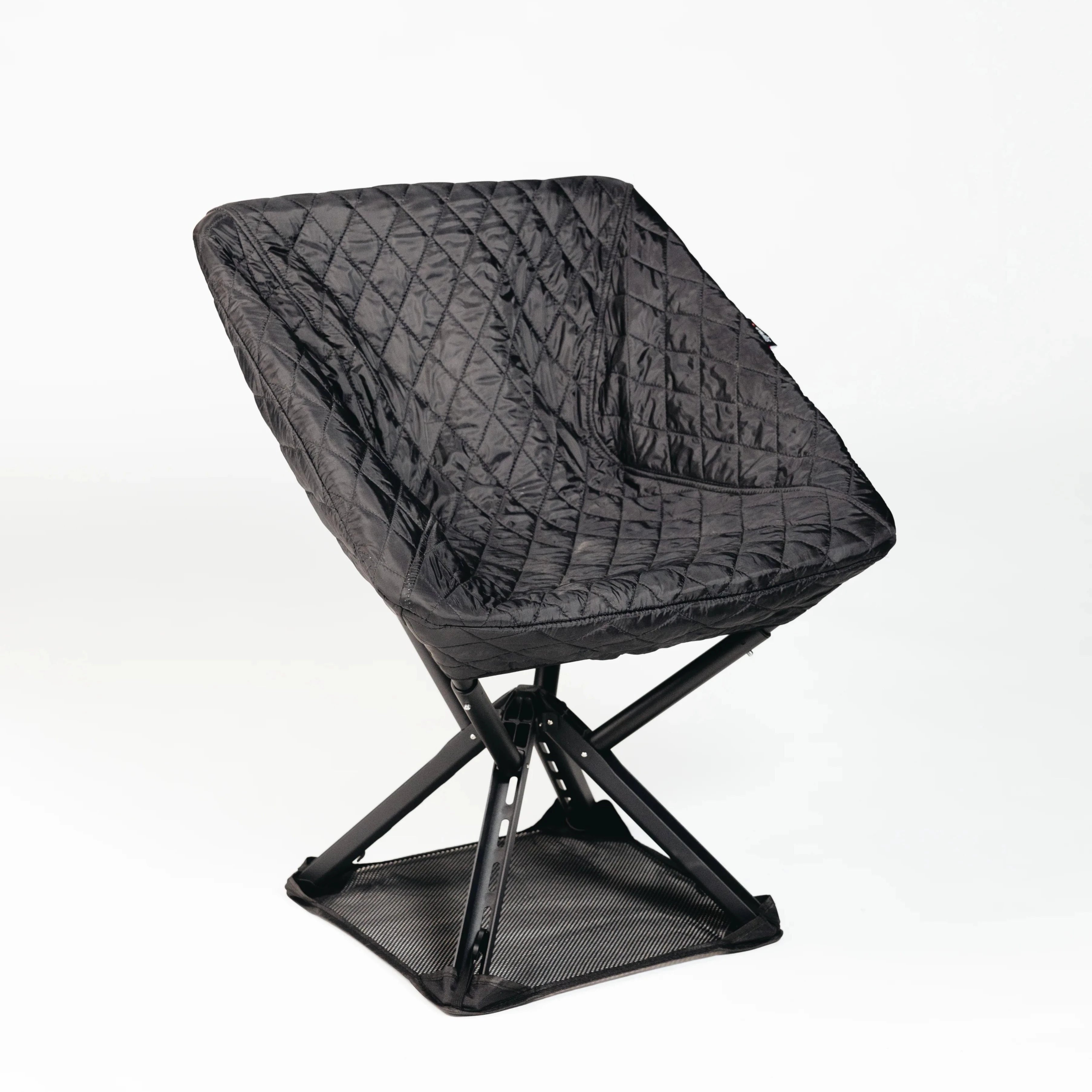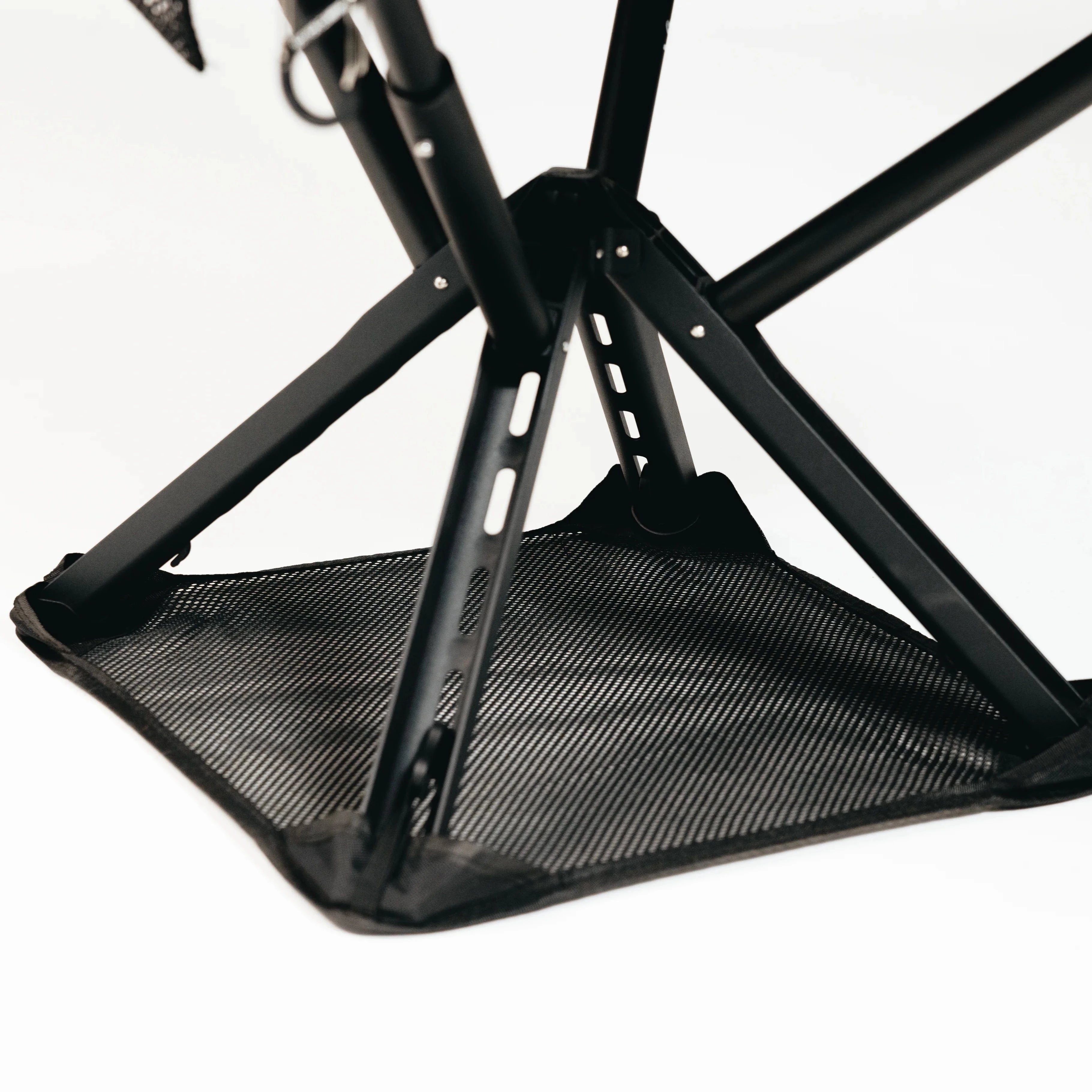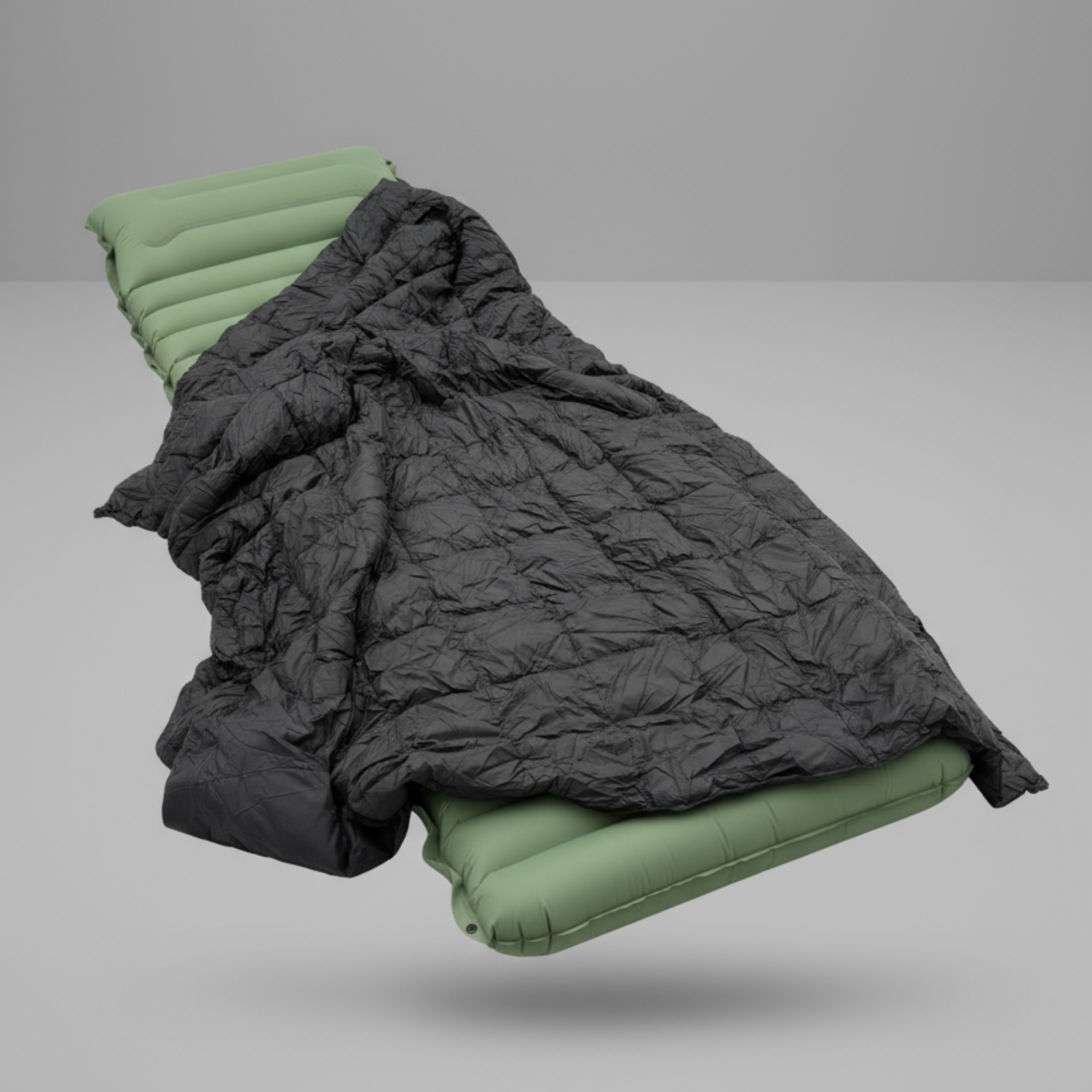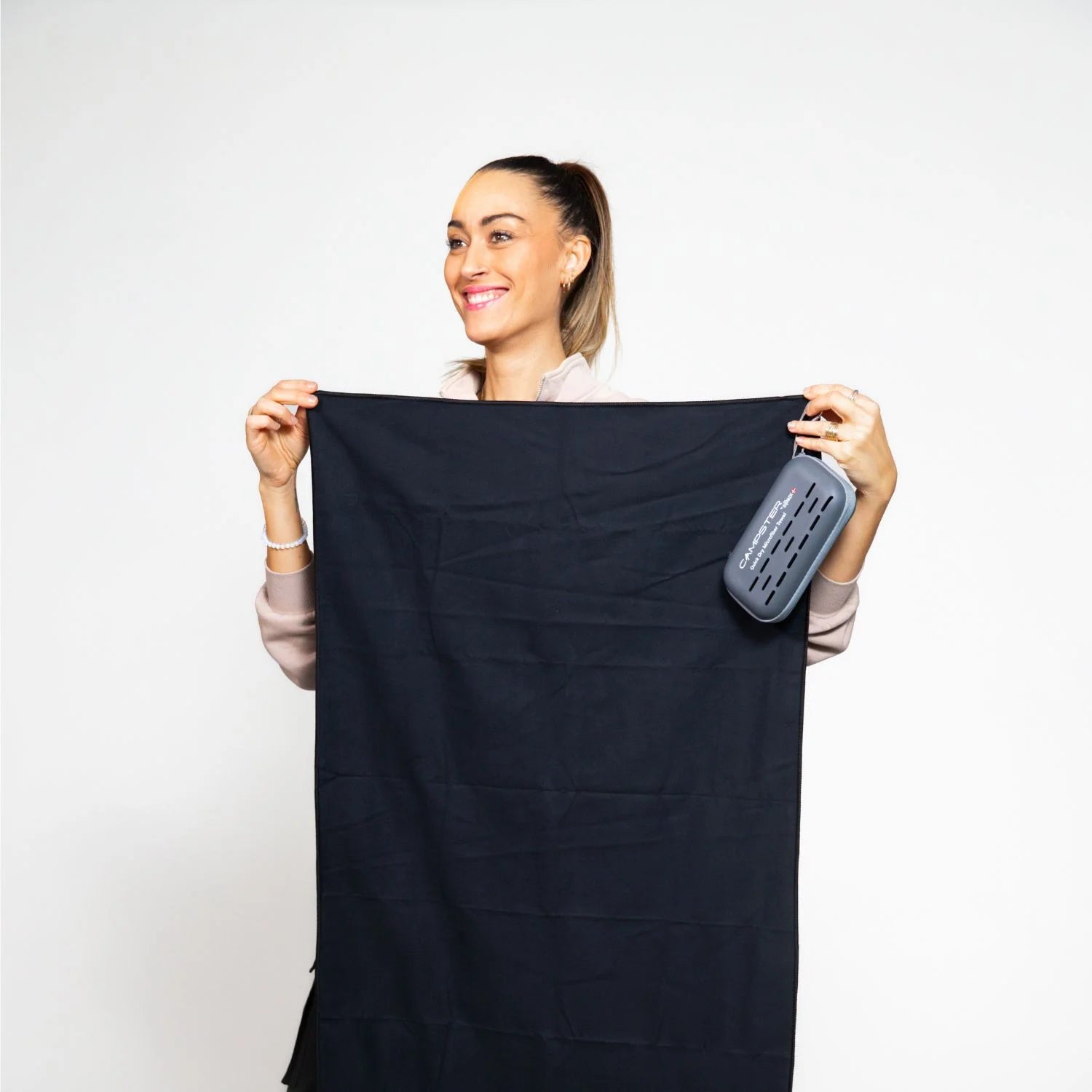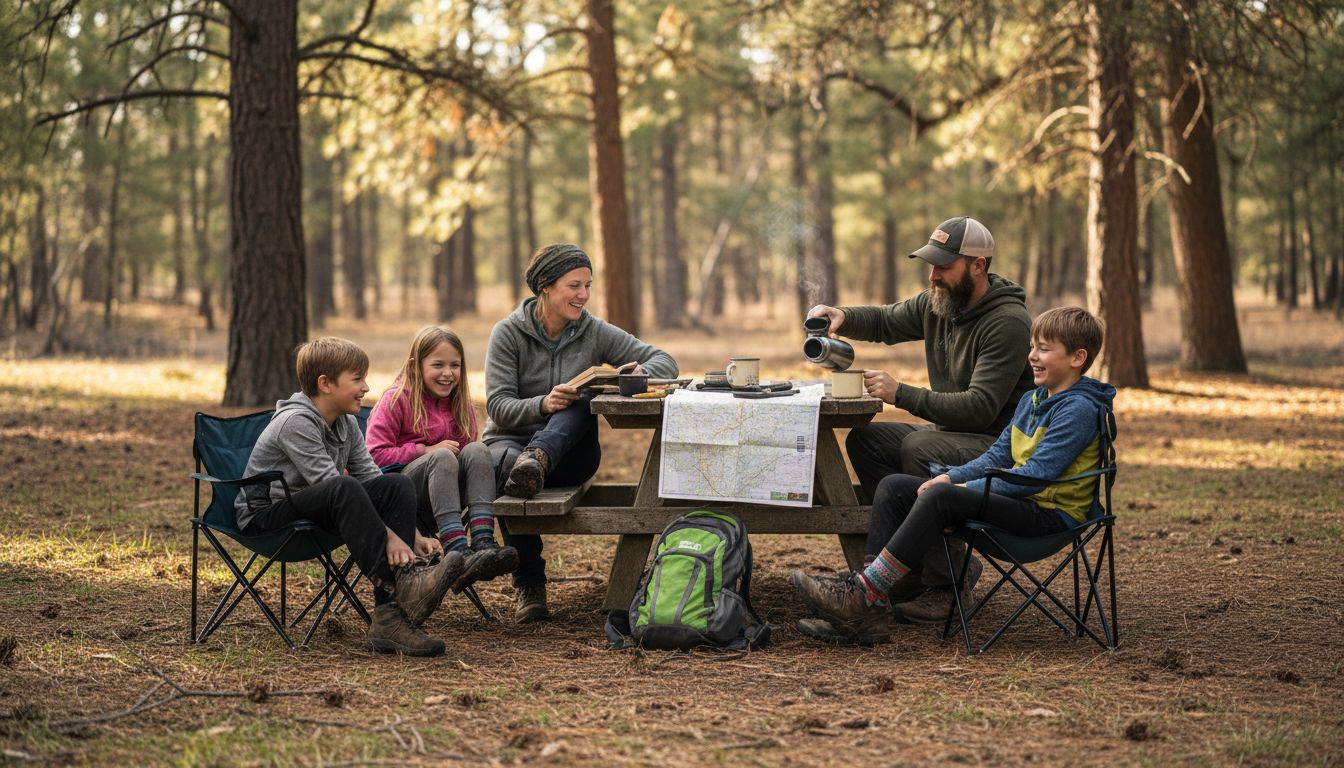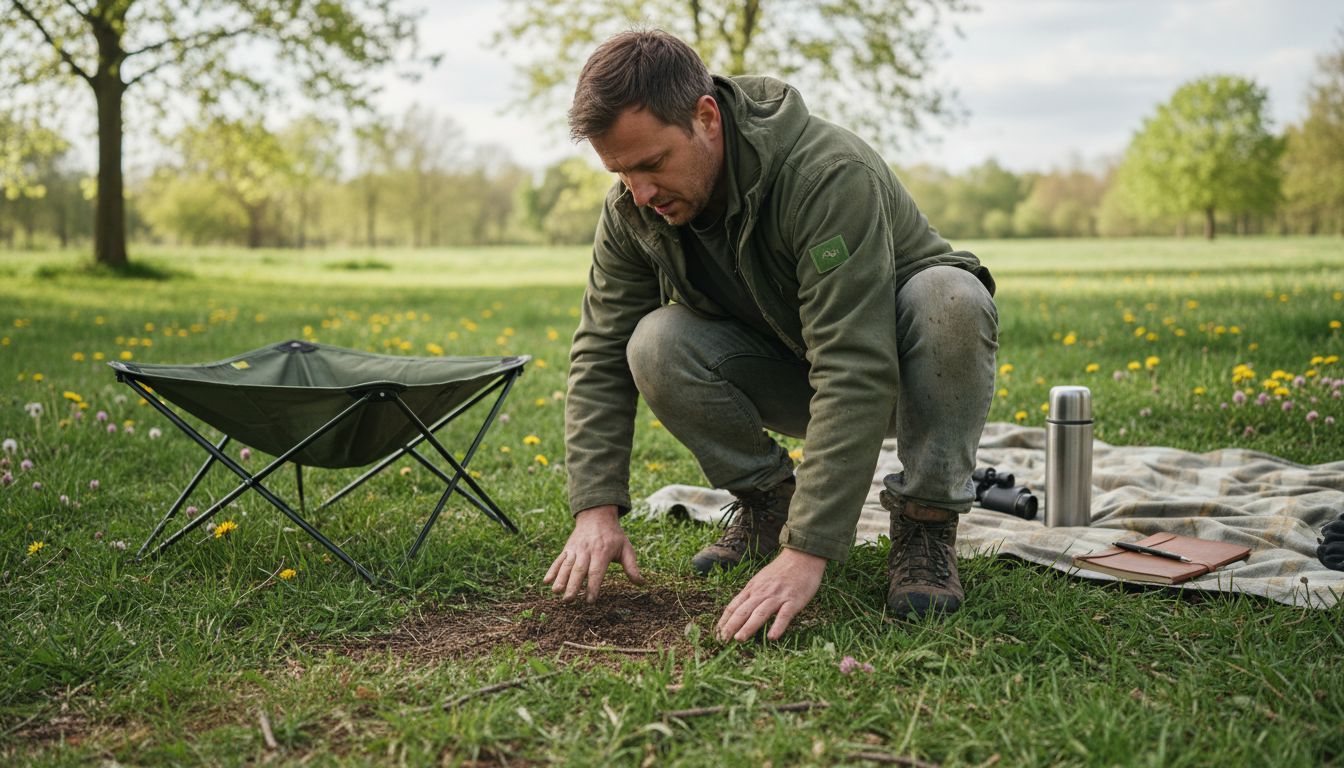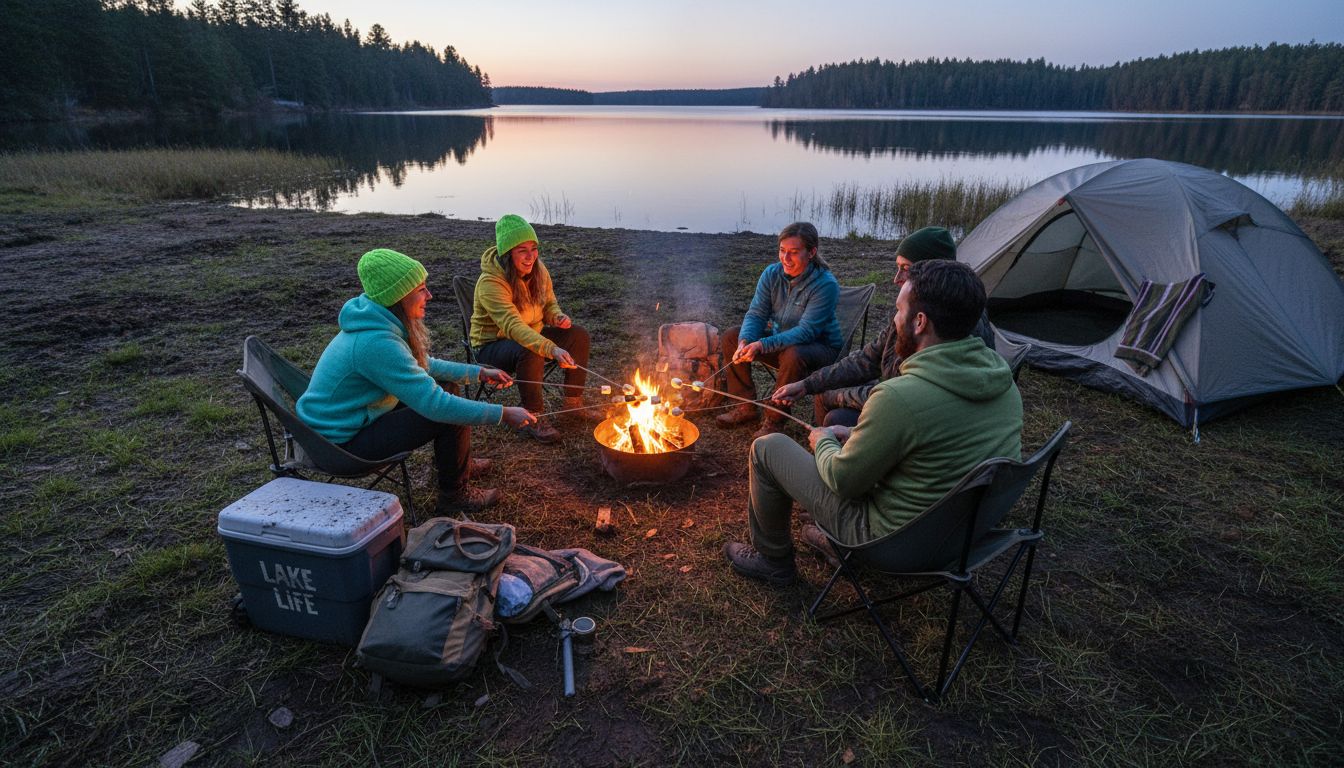Selecting the right camping chair can turn a simple outing into a truly comfortable experience, yet many american campers struggle to identify the features that actually matter. With over 60 million americans enjoying outdoor activities each year, understanding the specialized terms and types of camping chairs is more important than ever. This guide breaks down the terminology so you can confidently choose a chair that supports your adventures and matches your unique outdoor lifestyle.
Table of Contents
- Camping Chair Terminology: Core Definitions Explained
- Popular Types and Styles of Camping Chairs
- Key Features and Materials Demystified
- Comfort, Portability, and Durability Factors
- Common Misconceptions and Buying Mistakes
Key Takeaways
| Point | Details |
|---|---|
| Understanding Camping Chair Features | Focus on key features like material, portability, and comfort when choosing a camping chair for outdoor activities. |
| Diversity in Chair Types | Recognize various camping chair styles, each catering to specific needs, from ultralight backpacks to oversized comfort options. |
| Avoiding Common Misconceptions | Be aware of misconceptions regarding camping chair suitability, such as durability and comfort versus weight trade-offs. |
| Research Before Purchase | Always consider user reviews and specific use cases to ensure the chair meets your outdoor adventure needs. |
Camping Chair Terminology: Core Definitions Explained
Understanding the nuanced world of outdoor seating requires unpacking some fundamental terminology that goes beyond simply describing a place to park your posterior. A camping chair is fundamentally a portable seating solution designed for temporary outdoor environments, characterized by its lightweight construction and easy transportability Wikipedia.
At its core, a camping chair encompasses several critical design elements that distinguish it from standard indoor furniture. These typically include:
- Folding Mechanism: Allows compact storage and easy transportation
- Lightweight Materials: Usually constructed from aluminum, steel, or lightweight synthetic fabrics
- Portability: Designed to be carried easily during outdoor adventures
- Durability: Built to withstand various environmental conditions
Historically, portable seating solutions have fascinating roots. The Tripolina chair, invented by Joseph B. Fenby in 1877, represents an early milestone in portable chair design. This innovative chair featured wooden construction with metal swivel joints and animal hide, establishing fundamental principles of mobility and stability that modern camping chairs still employ Wikipedia.
Modern camping chairs have evolved far beyond their historical predecessors, incorporating advanced materials, ergonomic designs, and specialized features for specific outdoor activities. Whether you’re a casual weekend camper or a serious outdoor enthusiast, understanding these core definitions will help you select the perfect portable seating companion for your next adventure.
Popular Types and Styles of Camping Chairs
Camping chairs have evolved far beyond a simple place to sit, transforming into specialized seating solutions designed for different outdoor experiences. Camping chair styles range from minimalist ultralight designs to luxurious, feature-packed models that practically bring your living room into the wilderness.
Here are the most popular camping chair categories:
- Folding Camp Chairs: The classic design with a fabric seat and backrest, perfect for car camping and casual outdoor gatherings
- Backpacking Chairs: Ultralight, compact chairs weighing less than two pounds, designed for minimalist hikers and long-distance adventurers
- Reclining Chairs: Adjustable chairs with multiple positioning options, offering enhanced comfort for extended relaxation
- Rocker Chairs: Chairs with a curved base that allow gentle rocking motion, adding a touch of home comfort to outdoor settings
- Oversized Camp Chairs: Extra-wide designs providing additional space and support for larger individuals or those seeking maximum comfort
Each chair type serves a unique purpose, catering to different outdoor enthusiasts’ needs. Backpackers might prioritize weight and packability, while car campers can focus on comfort and additional features like built-in coolers, cup holders, and integrated side tables. The key is matching your chair to your specific adventure style and personal comfort requirements.
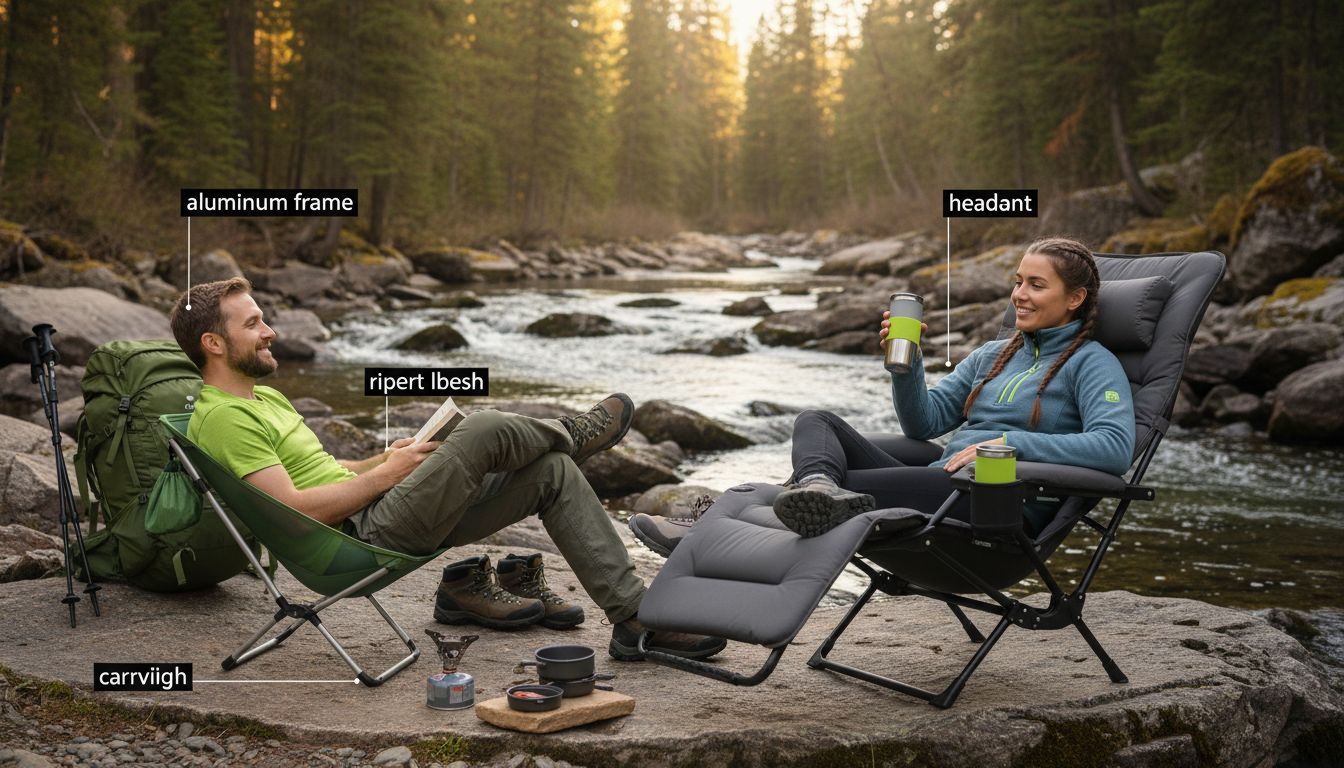
Beyond basic functionality, modern camping chairs now incorporate innovative materials and ergonomic designs. Some feature breathable mesh panels for temperature regulation, quick-dry fabrics for moisture management, and reinforced frames that can support significant weight while remaining surprisingly lightweight. Whether you’re a weekend warrior or a serious outdoor enthusiast, there’s a camping chair designed specifically to enhance your outdoor experience.
Key Features and Materials Demystified
Understanding the intricate world of camping chair materials and features is crucial for selecting the perfect outdoor seating companion. According to Deermaple, camping chairs typically feature robust frames constructed from steel or aluminum, providing exceptional durability and impressive resistance to rust and environmental challenges.
Key material characteristics for camping chairs include:
-
Frame Materials:
- Steel: Heavyweight, extremely strong, affordable
- Aluminum: Lightweight, rust-resistant, ideal for backpackers
- Composite Materials: Advanced options offering strength-to-weight optimization
-
Fabric Technologies:
- Polyester: Offers excellent UV resistance and quick-drying properties
- Nylon: Provides lightweight construction with superior abrasion resistance
- Ripstop Fabrics: Engineered to prevent tearing and extend chair longevity
Beyond basic materials, modern camping chairs integrate sophisticated features designed to enhance comfort and functionality. Ergonomic designs now incorporate elements like lumbar support, adjustable positioning, reinforced stress points, and innovative weight distribution systems. These advancements transform camping chairs from simple seating solutions into sophisticated outdoor equipment that can dramatically improve your wilderness experience.
The evolution of camping chair design reflects a deep understanding of outdoor enthusiasts’ needs. Manufacturers now prioritize creating chairs that are not just functional, but also comfortable, lightweight, and capable of withstanding diverse environmental conditions. Whether you’re a casual weekend camper or a serious backcountry adventurer, understanding these material nuances will help you make an informed selection that matches your specific outdoor lifestyle.
Comfort, Portability, and Durability Factors
Camping chairs represent a delicate balance between three critical performance attributes: comfort, portability, and durability. According to Outandaboutlive, the foundation of a superior camping chair lies in its strategic material selection, with frame materials like steel providing exceptional strength and aluminum offering superior corrosion resistance.
The key factors that define a high-performance camping chair include:
Comfort Considerations:
- Ergonomic Design: Supports natural body contours
- Padding Density: Determines comfort level and pressure distribution
- Breathable Fabrics: Prevent sweating and increase comfort
- Lumbar Support: Critical for extended sitting periods
Portability Metrics:
- Weight: Ultralight options under 2 pounds
- Folded Dimensions: Compact storage requirements
- Carry Mechanisms: Integrated straps or bags
- Setup Time: Quick and easy assembly
Durability Determinants:
- Frame Material Strength: Steel vs. aluminum construction
- Fabric Tear Resistance: Ripstop and reinforced materials
- Joint and Connection Quality: Welded vs. bolted connections
- Weather Resistance: UV and moisture protection
The intersection of these three factors determines a camping chair’s ultimate performance. Padded polyester fabrics and strategically placed mesh panels enhance breathability and comfort, while robust frame construction ensures the chair can withstand rugged outdoor environments. Whether you’re a weekend warrior or a serious backcountry explorer, understanding these nuanced characteristics will help you select a chair that meets your specific outdoor lifestyle needs.
Ultimately, the perfect camping chair is a personal investment that balances individual preferences with practical performance requirements.
 By carefully evaluating comfort, portability, and durability, outdoor enthusiasts can find a seating solution that transforms their wilderness experience from merely functional to genuinely enjoyable.
By carefully evaluating comfort, portability, and durability, outdoor enthusiasts can find a seating solution that transforms their wilderness experience from merely functional to genuinely enjoyable.
Common Misconceptions and Buying Mistakes
The world of camping chairs is riddled with misconceptions that can lead outdoor enthusiasts astray when making purchasing decisions. According to Outandaboutlive, one prevalent myth is that all camping chairs are universally suitable for every weather condition, when in reality, material selection plays a critical role in performance and durability.
Top misconceptions that can derail your camping chair selection include:
Material Myths:
- One-Size-Fits-All Fallacy: Believing a single chair works for every environment
- Durability Assumptions: Thinking all fabrics are equally weather-resistant
- Weight vs. Comfort Trade-off: Assuming lighter chairs cannot be comfortable
- Price Equals Quality: Believing the most expensive chair is always the best
Buying Mistakes to Avoid:
- Ignoring Weight Capacity: Selecting a chair without checking personal weight limits
- Overlooking Intended Use: Buying a chair without considering specific outdoor activities
- Neglecting Portability: Choosing chairs too heavy or complex to transport
- Skipping User Reviews: Failing to research real-world performance and experiences
While textaline materials might excel in prolonged outdoor exposure, polyester offers superior comfort but requires more careful maintenance. The key is understanding that each camping chair represents a nuanced balance of materials, design, and intended use. Cheaper chairs might save money upfront but could become uncomfortable or fail prematurely, making them a false economy in the long run.
Successful camping chair selection demands a holistic approach that considers personal needs, environmental conditions, and long-term value. By understanding these common misconceptions and avoiding typical buying mistakes, outdoor enthusiasts can invest in a chair that truly enhances their wilderness experience, providing comfort, reliability, and satisfaction across diverse outdoor scenarios.
Find Your Perfect Outdoor Seat With Confidence
Choosing the right camping chair means balancing comfort, portability, and durability while understanding essential camping chair terminology like folding mechanisms and frame materials. If you have ever felt frustrated by heavy, bulky chairs that do not fit your adventure style or fail to deliver lasting comfort then you are not alone. Many outdoor enthusiasts share the same challenge of finding a lightweight but durable chair that is easy to carry and built to withstand the elements.
At Sitpack, we solve these problems with innovative outdoor seating solutions such as the Campster II and Sitpack Zen. Our products prioritize minimalistic design, superior portability, and environmental responsibility without compromising user comfort and durability. Whether you want an ultralight backpacking chair or a compact seat to enhance your outdoor experience, our collection is thoughtfully crafted to match your needs.
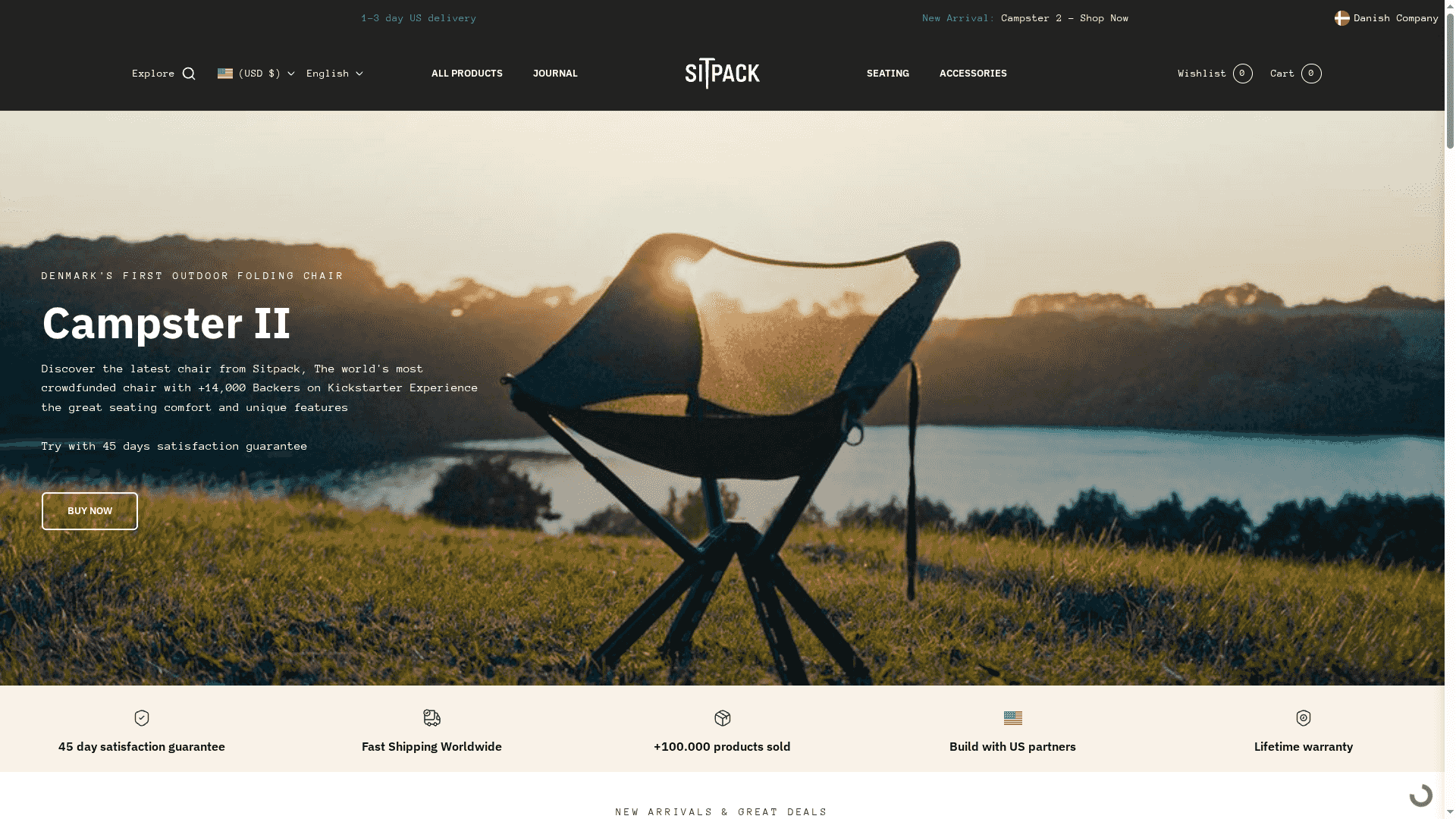
Explore the full range today at Sitpack and discover how you can elevate your camping adventures with reliable seating that aligns perfectly with the terminology and features discussed in the guide. Do not wait to experience comfort on the go. Start your journey toward effortless outdoor seating and shop now for fast worldwide delivery and a 45-day satisfaction guarantee.
Frequently Asked Questions
What is a camping chair?
A camping chair is a portable seating solution designed for temporary outdoor environments, characterized by lightweight construction and easy transportability.
What are the key features to look for in a camping chair?
Key features include a folding mechanism for compact storage, lightweight materials like aluminum or steel, durability to withstand various environmental conditions, and comfort-enhancing elements such as ergonomic design and lumbar support.
How do different camping chair styles differ in their usage?
Camping chair styles, such as folding camp chairs, backpacking chairs, and oversized camp chairs, cater to different needs. Folding chairs are great for car camping, while backpacking chairs prioritize lightweight and compact design for hiking.
What materials are commonly used in camping chairs?
Common materials include steel and aluminum frames for strength and lightweight construction, while fabrics like polyester and nylon provide durability and quick-drying properties. Ripstop fabrics can also enhance tear resistance for longer-lasting use.
